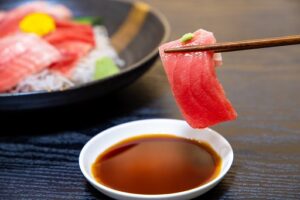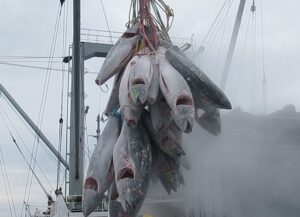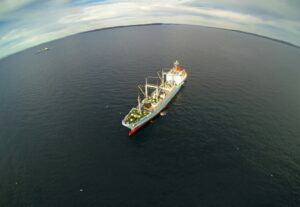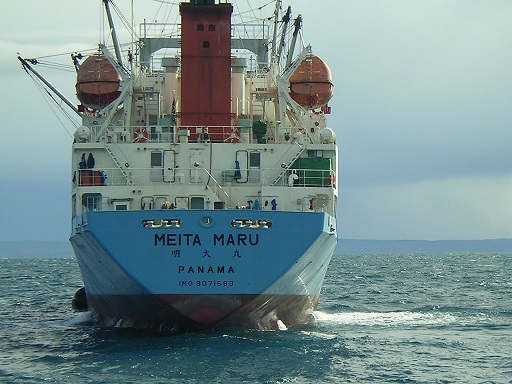
Japan is surrounded by sea and is connected to the rest of the world by sea.
Although it is not widely known because we do not have many opportunities to see it directly in our daily lives, marine transport is responsible for more than 90% of Japan's imports and exports, and a wide variety of cargo is transported by ship every day. We are one of the shipping companies that play a role in supporting Japan's lifestyle and economy, and among the many types of cargo we carry is frozen tuna.

Do you know why we in Japan can eat tuna swimming in distant seas as sashimi?

The key to this is the temperature.
Tuna can maintain its quality by being stored in a temperature range of -50 to 60 degrees Celsius, which is known as ultra-low temperature, where oxidation and drying are less likely to occur. Our ships, which specialize in transporting frozen tuna, are equipped with ultra-low temperature facilities to transport the tuna without losing its freshness.
We have two main business pillars: the onboard processing and freezing of farmed tuna and the ultra-low temperature refrigeration business.
In the onboard processing and freezing of farmed tuna, fresh farmed tuna is quickly frozen after being processed onboard to remove internal organs, etc., and then transported to the landing site.
To keep the freshness of the tuna intact, we strive to shorten the time between picking up the tuna and freezing it using the technology we have cultivated.
In the ultra-low temperature refrigeration business, instead of pelagic tuna longline fishing boats chasing tuna across the ocean, we receive natural tuna that has been frozen by the fishing boats at sea or at the port, and transport it to the landing site.
Once a pelagic tuna longline fishing vessel sets out on a voyage that lasts from a few months to a year or more, it also acts as an offshore delivery service, delivering bait, fuel, and daily necessities.

The most common types of tuna are bluefin tuna, southern bluefin tuna, bigeye tuna, yellowfin tuna, and albacore tuna. While tuna has become a popular fish in Japan today, it is also a fish that is strictly controlled for resource management. As a migratory fish, tuna migrate over a wide area in pursuit of food, so there are five international management organizations for each sea area in the world, and strict rules for resource management have been established. We are promoting our business while cooperating in the sustainable management of marine resources.

The farm-raised tuna industry is attracting attention as a fishery that nurtures the dwindling supply of natural tuna, and is flourishing overseas in places such as Australia, the Mediterranean Sea, and the coast of Mexico, where bluefin tuna and southern bluefin tuna are close to each other. It is thanks to this cattle-farmed tuna that we are able to eat tuna at a stable price. We conduct our business by dispatching our vessels to various places in accordance with the fishing season.
Since the season and fishing grounds for natural tuna differ depending on the species, the routes of our ships vary according to the fishing season, from the Indian Ocean to the Atlantic Ocean to the Pacific Ocean.
For Japanese people, who have a habit of eating fish raw, tuna is a staple of sashimi and sushi, and is one of the fish that has long been associated with and loved by the Japanese food culture.
We are proud to be a specialist in frozen tuna transportation, and we are transporting tuna somewhere in the world every day to protect Japan's rich food supply.
We are connecting Japan and the world with tuna.
